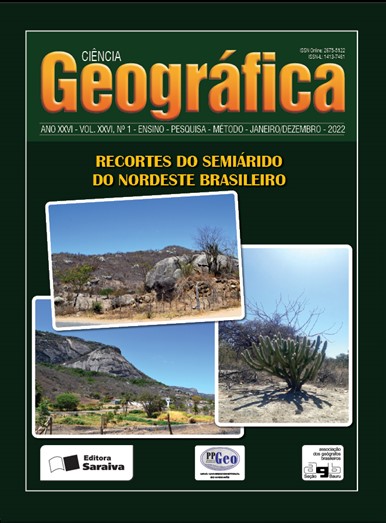DEERIFICATION RISK IN CANINDÉ DE SÃO FRANCISCO AND POÇO VERDE MUNICIPALITIES (SE)
DOI:
https://doi.org/10.18817/26755122.26.01.2022.2875Keywords:
Environmental degradation. Environmental modeling. Risk. Anthropogenic derivations.Abstract
This research aims to analyze the risk of desertifi cation in the semi-arid region of Sergipe state, namely in the municipalities of Canindé de São Francisco and Poço Verde, in 1990 and 2018. To achieve this goal, geographic data modeling was applied. Such modeling was validated with fi eld campaigns. It is possible to note that Canindé de São Francisco showed an increase of 60.7% in high risk areas (high and very high risk) and this corresponds to 62.2% of its territory. The Poço Verde municipality presents an increase of 156% in high risk classes of desertifi cation (high and very high) when compared to the mapping of 1990. This corresponds to 65.5% of the municipality’s area. Anthropogenic derivations, especially mechanized agriculture and extensive livestock in both municipalities, are the main vectors of increasing desertifi cation risk.


